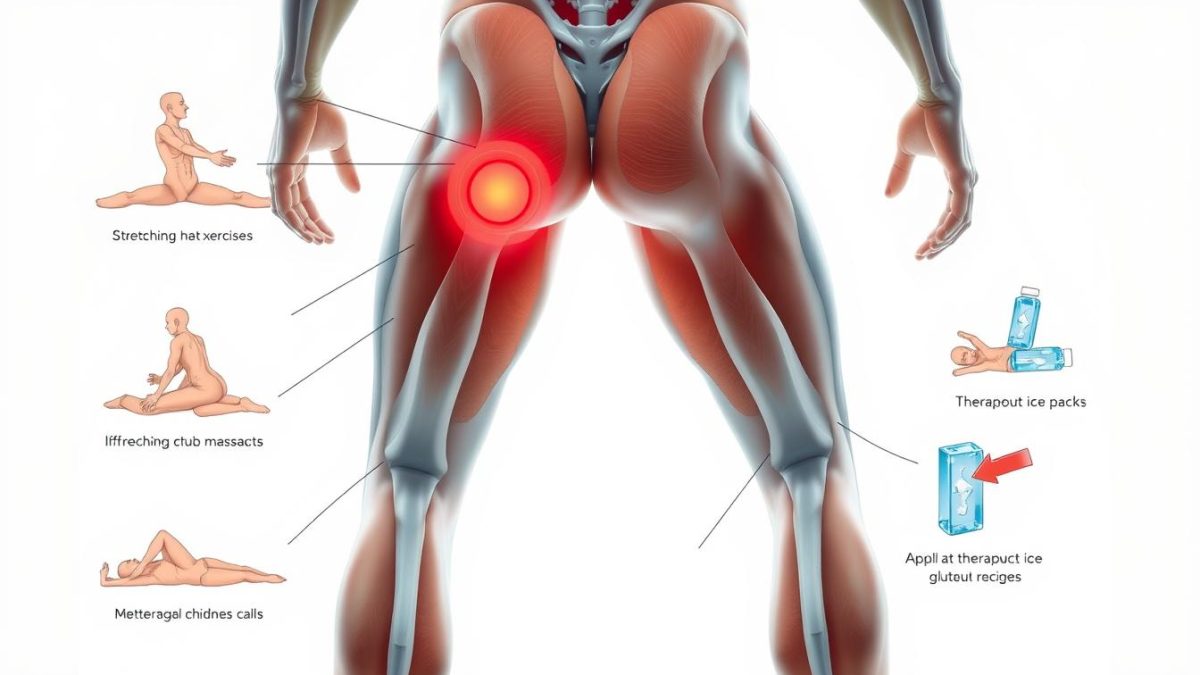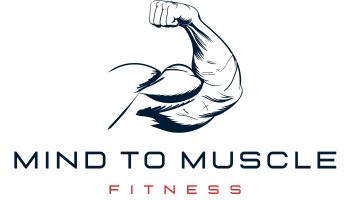
How to Treat a Pulled Muscle in Gluteus Effectively
Ever wondered why a simple strain in your gluteus can throw your entire day off balance? This powerful muscle plays a key role in everything from walking to sitting, and when it’s injured, even basic movements become a challenge.
A strain in this area can cause pain, stiffness, and limit your mobility. But the good news? With the right treatment, you can relieve discomfort and get back to your routine faster. This article will guide you through effective strategies to heal and restore function.
From rest and ice to targeted stretches, we’ll cover practical steps to help you recover. Let’s dive into the best ways to tackle this issue and regain your strength and stability.
Understanding the Role of Gluteus Muscles
Every step you take relies heavily on the strength of your gluteal muscles. The gluteus maximus is the largest and most powerful muscle in this group. It plays a key role in maintaining balance and enabling movement.
This muscle is essential for hip extension, which is the action of moving your thigh backward. Whether you’re standing up from a chair or climbing stairs, the gluteus maximus is hard at work. It also helps stabilize your pelvis, ensuring your body stays aligned during activities like running or jumping.
The gluteal group works together to support your body’s movements. For example, when you run, these muscles help propel you forward. During a jump, they provide the power needed to lift off the ground. Without them, even simple tasks would feel challenging.
| Activity | Role of Gluteus Maximus |
|---|---|
| Walking | Stabilizes pelvis and supports forward movement |
| Running | Provides power and balance |
| Jumping | Generates force for lift-off |
| Sitting to Standing | Extends the hip for upright posture |
Understanding the role of these muscles can help you appreciate their importance in daily life. By keeping them strong and healthy, you can improve your overall mobility and prevent injuries.
Recognizing a Pulled Muscle in Gluteus
Feeling a sharp twinge in your buttocks? It might be more than just a minor ache. A strain in this area often causes sudden, intense pain that can catch you off guard. This discomfort is usually the first clear symptom of an issue.
You might also notice tenderness when touching the affected area. Even simple movements like walking or sitting can feel uncomfortable. If left unchecked, this injury can lead to a reduced range of motion, making daily tasks harder.
Recognizing these signs early is crucial. Ignoring the pain or pushing through it can worsen the condition. Pay attention to your body’s signals and take action to prevent further damage.
Common Causes and Risk Factors
Have you ever felt a sudden pain after a quick movement? This discomfort often stems from tiny tears in the tissue, caused by overuse or abrupt actions. Repetitive activities, like running or cycling, can strain the area over time. Without proper rest, these small tears can worsen, leading to more significant issues.
Sudden twists or falls are another common cause. These actions put unexpected stress on the area, increasing the risk of injury. Even something as simple as lifting a heavy object incorrectly can lead to strain. It’s essential to be mindful of your movements, especially during physical activity.
Poor warm-up routines also play a role. Skipping stretches or jumping into intense activity without preparation can leave you vulnerable. A proper warm-up increases blood flow and flexibility, reducing the chance of a tear. Always take the time to prepare your body before engaging in any strenuous activity.
| Cause | Risk Factor |
|---|---|
| Overuse | Repetitive activities without rest |
| Sudden Movements | Twists, falls, or improper lifting |
| Poor Warm-Up | Lack of stretching or preparation |
Understanding these causes and risk factors can help you take steps to prevent injury. By being proactive, you can stay active and avoid unnecessary discomfort.
Identifying Symptoms and Warning Signs
Noticing discomfort in your lower body? It could be more than just a minor ache. A limited range of motion is one of the first signs something isn’t right. You might find it harder to move your leg or hip as freely as usual.
Soreness and stiffness are also common indicators. These feelings often appear after activity or even during rest. Simple tasks like sitting or standing can become uncomfortable.
Pay attention to how these symptoms affect your daily life. Walking, climbing stairs, or even lying down might feel challenging. Persistent discomfort is a clear signal to take action.
Ignoring these warning signs can lead to more severe issues. Early recognition is key to effective treatment. If you notice any of these symptoms, it’s time to address them before they worsen.
Immediate Home Treatments for Muscle Strains
Dealing with discomfort at home can be simpler than you think. The first step is to apply ice to the affected area. This helps reduce swelling and provides quick relief. Use a cold pack or a bag of frozen peas wrapped in a towel. Apply it for 20 minutes, then take a break. Repeat this process several times a day for the best results.
Next, consider light exercise to keep the area active. Gentle movements like walking or slow leg lifts can help. Avoid anything that causes pain or discomfort. The goal is to maintain mobility without overdoing it. Listen to your body and stop if you feel any strain.
Finally, gentle stretching can aid in recovery. Simple stretches like the seated forward bend or a mild hip flexor stretch can improve flexibility. Hold each stretch for 15-30 seconds and repeat a few times. This helps ease stiffness and promotes healing.
| Step | Action |
|---|---|
| 1 | Apply ice for 20 minutes, several times a day |
| 2 | Engage in light exercises like walking |
| 3 | Perform gentle stretches to improve flexibility |
Taking these steps at home can make a big difference. They help reduce pain, improve mobility, and prevent further injury. Remember, early care is key to a faster recovery. Start today and give your body the support it needs.
The Role of Rest and Ice in Recovery
Rest and ice are your best friends when recovering from an injury. Taking time to let your body heal is crucial. It allows the affected area to repair itself naturally. Without proper rest, the healing process can slow down, leading to prolonged discomfort.
Applying ice is another essential step. It helps reduce swelling and soothes the back of the affected area. Use a cold pack or a bag of frozen peas wrapped in a towel. Apply it for 15-20 minutes, then take a break. Repeat this process a few times a day for the best results.
These simple measures create a strong foundation for recovery. They help manage pain and inflammation, making it easier to move forward with other treatments. Think of rest and ice as the first steps in your healing journey.
While rest and ice are effective, they’re just the beginning. Combining these steps with physical therapy can speed up recovery. A therapist can guide you through exercises that strengthen the area and improve mobility. This approach ensures a smoother path back to your normal routine.
Remember, early care is key. By starting with rest and ice, you’re setting yourself up for a faster and more effective recovery. Take these steps seriously, and your body will thank you.
Effective Stretching Techniques
Stretching is a simple yet powerful way to ease tension and improve flexibility. It helps restore motion in the affected part of your body. By incorporating these techniques into your routine, you can speed up recovery and reduce discomfort.

Bridge Exercise
The bridge exercise is a great way to strengthen and stretch your lower body. Start by lying on your back with your knees bent and feet flat on the floor. Slowly lift your hips toward the ceiling, keeping your shoulders on the ground. Hold this position for 20-30 seconds, then lower your hips back down. Repeat this 8-10 times to improve flexibility and ease tension.
Hamstring Stretch
For the hamstring stretch, lie on your back with one leg extended and the other bent. Gently lift the extended leg toward the ceiling, keeping it straight. Hold this position for 20-30 seconds, then slowly lower it back down. Switch legs and repeat. This stretch targets the back of your thigh, improving motion and reducing stiffness.
| Stretch | Steps | Benefits |
|---|---|---|
| Bridge Exercise | Lift hips slowly, hold for 20-30 seconds | Improves flexibility and reduces tension |
| Hamstring Stretch | Lift leg carefully, hold for 20-30 seconds | Enhances motion and eases stiffness |
These techniques are gentle and effective. Remember to listen to your body and stop if you feel pain. Consistent stretching can make a big difference in your recovery journey.
Strengthening Exercises for Gluteal Muscles
Building strength in your lower body can transform your daily movements. Simple exercises like glute bridges are highly effective. They target the maximus muscles, which are crucial for stability and power.
Glute bridge variations are a great place to start. Begin by lying on your back with your knees bent and feet flat on the floor. Lift your hips toward the ceiling, squeezing your glutes at the top. Hold for 2-3 seconds, then lower slowly. Repeat 10-15 times.
Adding single-leg bridges can increase the challenge. Lift one leg while performing the exercise, keeping your knee aligned. This variation strengthens the supporting leg and improves balance.
Proper form is essential. Keep your core engaged and avoid arching your back. Start with basic movements and gradually increase intensity. This approach prevents injury and ensures steady progress.
Strengthening these muscles not only improves mobility but also reduces the risk of future discomfort. Incorporate these exercises into your routine for lasting benefits. Your body will thank you!
When to Seek Professional Medical Help
Persistent discomfort could be a sign of a deeper problem. If your pain doesn’t improve after a few days, it might indicate a serious condition. Home treatments like rest and ice are helpful, but they’re not always enough.
If standard methods fail, it’s time to explore repair options. Tendon injuries, in particular, should never be ignored. These issues often require specialized care to heal properly.
In severe cases, surgery may be necessary. This is rare but essential when other treatments don’t work. Ignoring symptoms can lead to long-term complications, so it’s better to act early.
Here’s a quick guide to help you decide when to consult a doctor:
| Symptom | Action |
|---|---|
| Persistent pain | Seek medical evaluation |
| Failed home treatments | Explore repair options |
| Severe discomfort | Consider surgery |
| Tendon injuries | Consult a specialist |
Don’t wait for symptoms to worsen. Early intervention can make a big difference in your recovery. If you’re unsure, it’s always better to consult a professional.
Importance of Physiotherapy and Rehabilitation
Recovering from an injury requires more than just rest; it needs a structured approach to restore function. Physiotherapy plays a vital role in this process, helping your body heal and regain strength. It focuses on gentle movements, activation, and strengthening of key areas like the pelvis and associated muscle groups.
Early Phase Recovery
The first step in rehabilitation involves gentle movements to reduce stiffness and improve flexibility. This phase focuses on easing discomfort and preparing the body for more intense activities. Simple exercises, like light stretches and controlled motions, help restore mobility without overloading the pelvis.
During this stage, the goal is to activate the medius and other muscles in the group. These muscles are essential for stability and movement. By gradually increasing activity, you can prevent further injury and promote healing.
Activation and Strengthening
Once the early phase is complete, the focus shifts to activation and strengthening. Targeted exercises help rebuild strength in the medius and surrounding muscles. This improves pelvis stability and enhances overall function.
Strengthening these muscles is crucial for balance and proper movement. It reduces the risk of future injuries and helps your body perform daily tasks with ease. A combination of stretching and resistance exercises ensures steady progress.
| Phase | Focus | Benefits |
|---|---|---|
| Early Recovery | Gentle movements and activation | Reduces stiffness, improves mobility |
| Activation | Targeted exercises for medius and group | Enhances stability and strength |
| Strengthening | Resistance and stretching exercises | Improves balance and function |
Physiotherapy is a powerful tool for recovery. It helps your body regain balance and proper function, ensuring a smoother path back to your normal routine. Start early and stay consistent for the best results.
Overcoming Common Setbacks in Recovery
Recovery isn’t always a straight path, and setbacks can happen. It’s normal to feel frustrated if pain returns or progress slows. Understanding these challenges can help you stay on track and regain your strength.
One common setback is pain in the buttock area. This often signals that your body needs more rest. Pushing through discomfort can worsen the injury and delay healing. Listen to your body and adjust your routine as needed.
Resuming daily tasks too soon is another pitfall. It’s tempting to jump back into your routine, but doing so can strain the affected area. Start slowly and avoid activities that cause discomfort. Gradual reintroduction is key to a full recovery.
Here are some tips to help you overcome setbacks:
- Monitor your body: Pay attention to how you feel during and after activity. Pain or stiffness is a sign to slow down.
- Rest when needed: Don’t hesitate to take breaks. Your body heals best when given time to recover.
- Gradual activity: Start with light movements and increase intensity over time. This reduces the risk of re-injury.
Setbacks are part of the healing process. By staying patient and mindful, you can overcome challenges and move closer to full recovery. Take it one step at a time, and your body will thank you.
Techniques to Improve Hip and Pelvis Mobility
Improving hip and pelvis mobility can make daily activities easier and more comfortable. After a muscle strain, targeted exercises and stretches can help restore movement and reduce stiffness. These techniques focus on the affected side to enhance flexibility and strength.
One effective method is the hip flexor stretch. Start in a lunge position with one knee on the ground. Gently push your hips forward until you feel a stretch in the front of your hip. Hold for 20-30 seconds and switch sides. This stretch improves mobility and reduces tension.
Another helpful exercise is the pelvic tilt. Lie on your back with knees bent and feet flat. Tighten your abdominal muscles and tilt your pelvis upward. Hold for 5 seconds, then release. Repeat 10-15 times to strengthen the lower body and improve mobility.
Here’s a quick guide to effective exercises:
| Exercise | Steps | Benefits |
|---|---|---|
| Hip Flexor Stretch | Lunge position, hold for 20-30 seconds | Improves flexibility and reduces tension |
| Pelvic Tilt | Tilt pelvis upward, hold for 5 seconds | Strengthens lower body and enhances mobility |
| Side-Lying Leg Lift | Lift leg slowly, hold for 2-3 seconds | Targets affected side and improves stability |
Gradual progress is key to recovery. Avoid overexertion and listen to your body. Consistent practice of these techniques can restore mobility and prevent chronic issues. Start today and take the first step toward a more active lifestyle.
Preventative Measures for Future Muscle Strains
Taking steps to prevent future injuries can keep you active and pain-free. A little preparation goes a long way in avoiding discomfort during activity. By incorporating simple habits into your routine, you can protect your body and stay on track with your fitness goals.
Warm-Up and Cool-Down Tips
Starting your workout with a proper warm-up is essential. It prepares your tissue for activity and reduces the risk of injury. Focus on dynamic movements like leg swings, arm circles, and light jogging. These exercises increase blood flow and improve flexibility.
After your workout, take time to cool down. Gentle stretches help maintain your range motion and prevent stiffness. Try hamstring stretches, quad pulls, and calf stretches. Hold each stretch for 20-30 seconds to relax your muscles.
- Dynamic Warm-Up: Leg swings, arm circles, light jogging.
- Cool-Down Stretches: Hamstring, quad, and calf stretches.
- Duration: 5-10 minutes for warm-up and cool-down.
Building Strength and Flexibility
Strengthening your body is key to preventing injuries. Focus on exercises that target your core, hips, and legs. Squats, lunges, and planks are great options. They build stability and support your tissue during activity.
Flexibility is equally important. Regular stretching improves your range motion and reduces tension. Incorporate yoga or Pilates into your routine for added benefits. These practices enhance balance and coordination, making them ideal for sport enthusiasts.
| Exercise | Focus Area | Benefits |
|---|---|---|
| Squats | Legs and Core | Builds strength and stability |
| Lunges | Hips and Thighs | Improves balance and flexibility |
| Planks | Core | Enhances posture and endurance |
By combining warm-up routines, cool-down stretches, and strength-building exercises, you can stay injury-free. Start today and make prevention a part of your active lifestyle!
Parting Thoughts on Effective Muscle Recovery
Recovering from discomfort doesn’t have to feel overwhelming. By following the tips in this guide, I’ve learned how to listen to my body and adjust my routine for better results. Whether it’s rest, gentle stretches, or strengthening exercises, small changes can make a big difference.
One thing I’ve realized is the importance of addressing even the minimus signs of strain. Ignoring them can lead to bigger issues. Taking care of your bone and muscle health now ensures a smoother recovery journey.
I encourage you to adopt a balanced approach. Combine rest with movement, and don’t rush the process. Your body knows best, so pay attention to its signals. With patience and consistency, you’ll regain strength and mobility.
Remember, recovery is a journey, not a race. Take it one step at a time, and you’ll be back to your best self soon!



